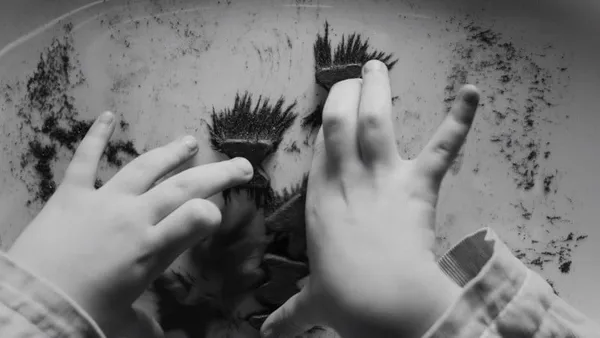Eye For Film >> Movies >> Iron Butterflies (2023) Film Review
Iron Butterflies
Reviewed by: Amber Wilkinson

Roman Liubyi takes an avant garde approach to this documentary about Malaysian Airlines flight MH17, which was shot down over Ukraine in July 2014 with the loss of 298 lives. They, according to the argument advanced by Liubyi, were early victims of the current conflict with Russia.
Although tackling the timeline of the atrocity in traditional fashion, from the crash to the aftermath and a Hague trial in absentia of Russian soldiers, the director also takes an almost sensorial approach to the story via choreographed segments that offer an emotional counterpoint. The sound design is also employed with skill and purpose, in particular in a segment when the names of the victims are read out, tumbling over one another in a collage before slowing down in a way that brings home the sheer enormity of the loss.
Liubyi also connects the dots from 2013’s Euromaidan civil unrest right through to last year’s invasion. A secondary theme of the film is propaganda and the Orwellian approach of the Russian government following the attack.
This propaganda extends back to the BUK surface-to-air missile system which was used to shoot down the plane, the virtues of which we see extolled in a piece of Russian archive film.
Liubyi also shows us the flight paths over Ukraine, with planes mostly skirting the area where the separatist Donbass conflict raged in 2014. We also hear snippets Russian conversations intercepted by Ukranian security forces at the time that the plane was brought down.
Initially, we see jubilation from the separatists as a plume of smoke rises from the crash site in mobile phone footage and Russian reports praising their armed forces for bringing down a Ukranian transport plane. “People around are so happy,” says someone, while, chillingly, a child’s voice offers, “So nicely hit!” But as the news begins to emerge that it was a civilian aircraft, the Russian narrative immediately switches in a bid to blame Ukraine. The iron butterflies of the film’s title, refer to the shape of the shrapnel holes left in the plane’s hull, which are a trademark of BUK missiles, and are one of the pieces of evidence that leave Russian culpability in little doubt.
The documentary ranges from the surreal - children’s beds made to look like a BUK misssile launcher and a psychic claiming to know the truth - through disturbing footage of soldiers posing with the wreckage as though they were on safari to poignant testimony from Robert Oehlers, whose cousin was killed in the crash. His observations about the European dependence on gas are notable - something that has only come more into focus in recent months. Through the course of this film, you’ll learn an awful lot about surface to air missiles and about the way truth can be twisted to suit a narrative.
A late-stage animated element may be a little over-ambitious, but Liubyi’s film succeeds in bringing home not just the enormity of the crash itself but of the scale of what was lost aboard, including many key figures who were on route to an AIDS conference. His film may be experiemental but its no less effective for that.
.
Reviewed on: 25 Jan 2023

















